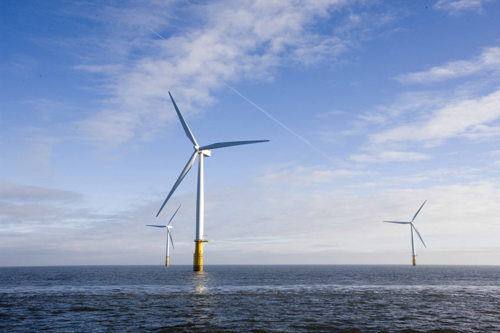How Centrica is building and protecting biodiversity across our business
We recognise that human activities can have significant impacts on natural ecosystems and we remain steadfast in our commitment to protect biodiversity. We focus our attention where the potential impact on biodiversity is greatest, such as where we explore, source and generate energy. We conduct environmental impact assessments, develop biodiversity action plans and seek the expertise of leading environmental organisations to ensure we mitigate adverse impacts while encouraging local ecosystems to flourish.

We work hard to manage our ecological impact at our Lincs offshore wind farm, from the construction of the turbines as well as during the operational phase. During construction in 2011, we gained permission to try a new technique for installing cables beneath an environmentally sensitive saltmarsh using a trenching tool that reduced pressure on the ground. Since then, we have monitored the saltmarsh’s recovery and the findings demonstrate that regrowth is progressing with full recovery expected soon as a result of precautions taken during installation. We have also studied the impact of offshore wind farms on seabirds such as the pink-footed goose, to track potential disturbance or displacement of flight paths, injuries and fatalities from collisions with the turbines. Results have so far shown that the impact to birds has been minimal, with the majority avoiding the turbines by flying above or around them.
At our Langage gas fired power station, we created a Habitat Management Plan in 2014 to further increase biodiversity at the site. As part of the Plan, we will plant new fruit trees that will provide an important source of food for a range of invertebrates, birds and mammals. Meanwhile, we will support increased floral diversity with the planting of native bulbs which will provide a valuable nectar source for insects. At Killingholme gas-fired power station, we cleared invasive trees from the wooded area and re-planted local species such as Hazel to enhance habitat growth. We also installed weirs to help maintain water levels and encourage the colonisation of frogs and amphibians.
Following heavy rain at our upstream Exploration and Production business in Canada, we had a number of bridge washouts which needed repair. As the river was home to several threatened fish species, we sought the advice of fish biology experts to help us plan, construct and monitor the impact of our repairs on the fish during 2014. In Norway, we conducted an environmental survey on the proposed pipeline route at the Fogelberg oil field to map the presence of protected cold water corals. This ensured that coral species were not disturbed by subsequent drilling.
These are just a few examples of how teams right across Centrica, work hard to assess, understand and manage the potential environmental and ecological impacts of our operations and seek opportunities to enhance the local natural environments within which we operate.